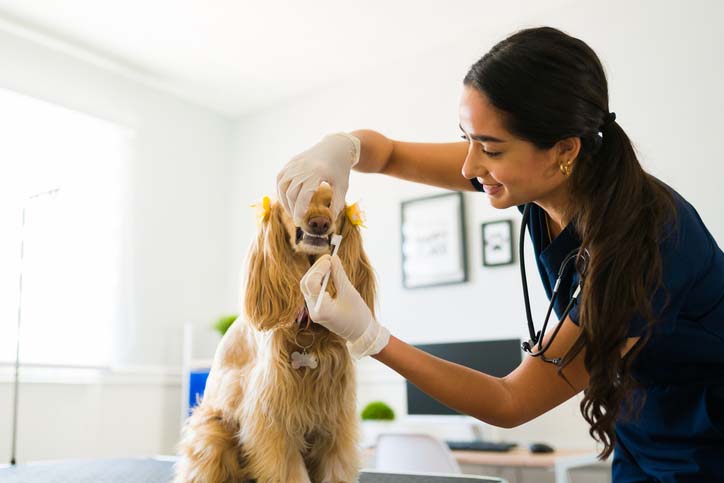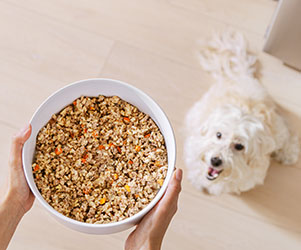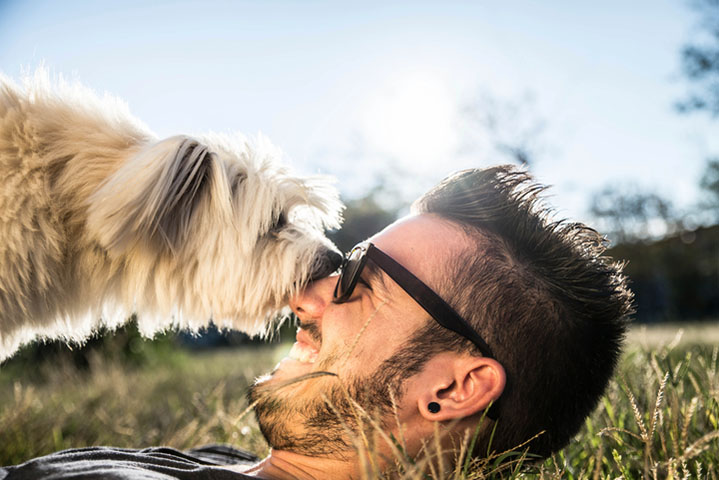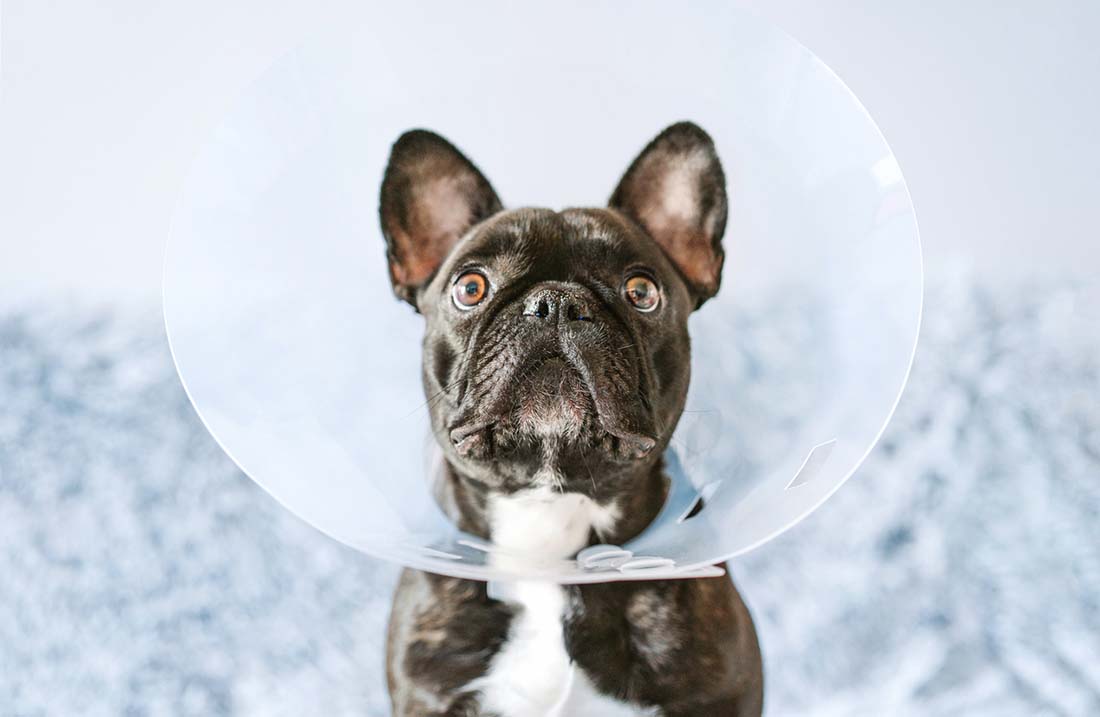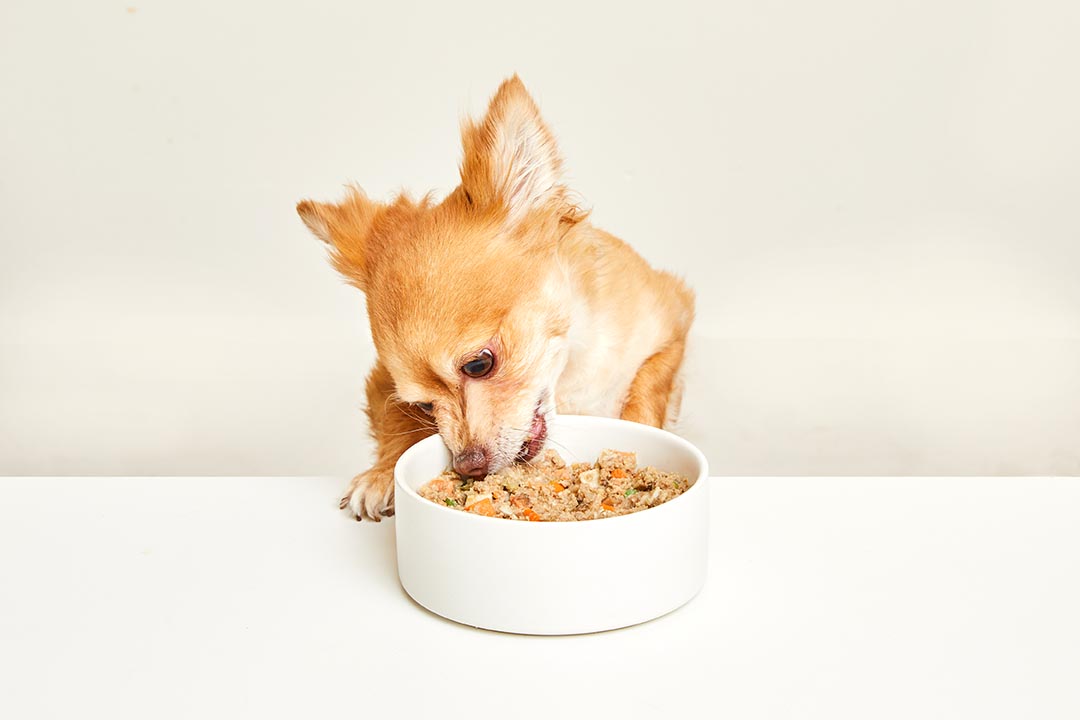5 Ways to Keep Your Dogs Teeth Clean
Knowing how to keep your dog’s teeth clean and being consistent with it is important for your pet’s overall health, too.
As pet parents, we tend to be diligent when it comes to addressing needs that affect our dogs’ appearance and health, such as diet, grooming, and exercise. But one of the most important needs which often gets overlooked is maintaining their dental health. Knowing how to keep your dog’s teeth clean and being consistent with it is important for your pet’s overall health, too.
Canines, back when they were hunters in the wild, kept their teeth healthy by gnawing on bones and ripping meat from their prey — actions that produced benefits similar to brushing. By comparison, today’s commercial and homemade dog foods require much less effort to consume. So we can no longer rely on diet alone to take care of a dog’s teeth.
That’s why it’s so important to prioritize your dog’s oral health. Neglecting your dog’s teeth could lead to periodontal disease, which can cause a number of long-term health issues.
Thankfully, keeping your dog’s teeth clean can be simple if you follow the right steps. We’re sharing a comprehensive guide outlining everything you need to know — from effective techniques to dietary considerations — so you can keep your furry friend’s gums and pearly whites strong and healthy.
DOG TEETH CLEANING: WHY IS IT IMPORTANT?
If your pup is less than enthusiastic when you brush your dog’s teeth, you’re not alone. According to one recent study, pet parents cited uncooperative dogs as the biggest obstacle to proper oral care. My own almost never let me brush their teeth, clamping their jaws together so I can’t even get a toothbrush in the dog’s mouth. One of them runs away the minute she smells the toothpaste.
However, no matter how difficult it may seem, caring for your dog’s teeth is vital to their overall health. “Poor oral health care will ultimately lead to periodontal disease, which starts with gingivitis and may progress to bone loss and eventual tooth loss,” says Dr. Jessica Wilson, DVM, a residency-trained specialist in veterinary dentistry.
According to Wilson, poor oral health can lead to:
- gingivitis (inflammation of the gums)
- halitosis (bad breath)
- oral pain or discomfort
- bone or tooth loss
And the consequences grow more extreme in the long term. Worsened gingivitis may lead to bone loss and eventual tooth loss. Halitosis can change in intensity, depending on how impacted the oral cavity becomes. And increased oral pain can lead to decreased appetite, weight loss, and behavioral changes, like aggression.
Additionally, Wilson says, “Bacteria from the oral cavity can travel to other parts of the body such as the heart, liver, or kidneys and can make these organs compromised in function.”
WHEN TO START DENTAL CARE
The best time to start addressing your dog’s dental health needs is the minute you welcome them into your life. That’s even more crucial if you’ve got a small breed dog, as they are more prone to periodontal disease
For puppies, Wilson says, “It’s easier for them to accept tooth-brushing early on if trained properly and eased into this habit slowly over time.”
When you have a dog adopted as an adult or in its golden years, Wilson suggests getting their teeth evaluated by a veterinarian as soon as possible to detect pre-existing oral diseases. Such conditions may “make it very challenging to start daily tooth brushing due to oral discomfort/pain and lack of proper introduction to tooth brushing,” says Wilson.
Knowing what you could be dealing with ahead of time gives you a chance to discuss a plan with your veterinarian, instead of forging ahead (perhaps painfully) armed with a dog toothbrush and good intentions.
5 WAYS TO KEEP YOUR DOG’S TEETH CLEAN
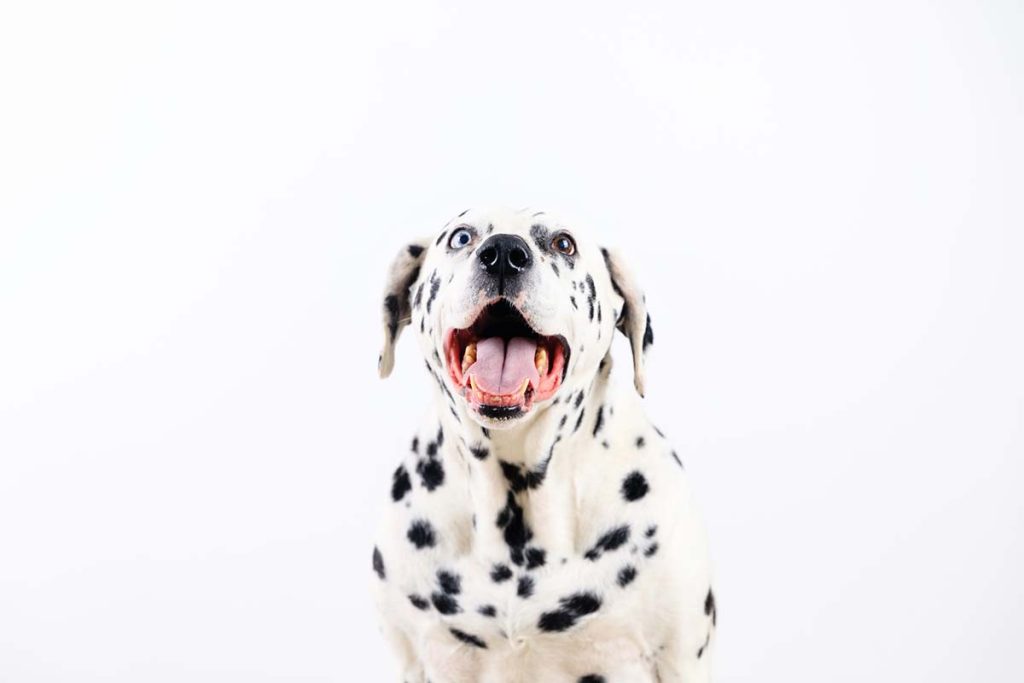
Regardless of when you start, there are effective steps you can take to improve a dog’s oral and overall health at any age or stage of life.
Some of these options are more beneficial than others. But any one of them is better than no dental care at all. And the best choices are the ones you’re most likely to sustain.
I opt to get my dogs’ teeth cleaned by the veterinarian and use a gel regularly. But you may find it easier to get your pet to comply with brushing and dog toothpaste. Keep reading to discover which dental care options will work best for you and your dog.
1. VETERINARY DENTAL CLEANING
During a dog’s annual checkup veterinarians typically conduct a brief oral exam. They may suggest a dental cleaning under anesthesia if there’s evidence of gingivitis, infection, bad breath, tooth fractures, or more.
“Once the patient is under anesthesia, a complete oral exam with assessment of all of the oral structures and each tooth is performed,” says Wilson. Additionally, a series of x-rays will be taken to assess the health of each tooth under the gum line. If the veterinarian finds evidence of significant bone loss or any teeth that are loose, fractured, or broken, they may need to do extractions. The vet will contact you to go over treatment options or recommend a specialist.
For middle-aged and senior pets, says Wilson, “Part of the pre-anesthesia planning will include a complete physical examination from the veterinarian, lab work to assess the health of internal organs before anesthesia, and a series of chest x-rays.”
In most cases, your dog can come home the same day of the procedure. But the decision is up to the veterinarian. It may depend on how your pet does under anesthesia and during recovery.
Before the dental visit
Before booking your dog’s first professional cleaning, ask the veterinarian questions about how long the procedure takes, and whether it needs to be staged or split into two separate procedures if the dental or gum disease is severe.
According to Wilson, one potential concern to consider with this option is anesthesia. “Although it is generally quite safe for most pets to undergo anesthesia, there is always the risk of complication. And this is a conversation that must occur with your veterinarian prior to any anesthetic event.”
For significant dental disease, you can visit a Veterinary Dentist who is specially trained and may work side-by-side with a veterinary anesthesiologist to ensure your pet’s safety.
An important warning about anesthesia-free cleaning
As the name suggests, this procedure does not involve anesthesia at all. While the prospect of avoiding the risks associated with anesthesia might sound appealing to pet parents with senior dogs, anesthesia-free cleaning is risky in other ways.
According to Wilson, the procedure involves hand-scaling the tooth surface to remove tartar build-up, which gives the appearance of clean teeth. But that’s as far as it goes. It doesn’t address the threat of oral disease, 80% of which occurs below the gum line.
And that’s not the only risk. “It is generally not an acceptable practice because the patient is awake for the procedure and any sudden movements can result in injury to the gum tissue with sharp instruments,” warns Wilson. In addition, sudden movements could also injure any humans involved in restraining the pet.
Ultimately, this may be a more affordable dog teeth cleaning option. But it could end up costing you more in the long run because it allows oral disease to proceed unchecked.
2. BRUSHING YOUR DOG’S TEETH
How often should dogs get their teeth cleaned? The answer may surprise you. Just like humans, dogs need to have their teeth cleaned daily. Yes, you read that correctly. A dog’s teeth will decline quickly if proper oral hygiene isn’t provided on a regular basis. And proper brushing can be an effective means of preventing dental issues
When brushing, pay close attention to the back of your pet’s teeth where food and debris tend to accumulate on the premolars and molars. While this is often challenging with small dog breeds, there are a variety of finger brushes and children’s pediatric brushes with soft bristles that may help because they’re scaled for smaller mouths.
Wilson recommends that if daily brushing isn’t possible, pet parents can try brushing every other day. “It takes approximately 48 hours for the plaque film — the ‘scum’ on teeth that tooth-brushing removes — to start mineralizing and hardening.”
When it comes to toothpaste, avoid human toothpaste at all costs. “Our toothpaste is often filled with additives and flavor enhancers such as xylitol, which is dangerous for pets,” says Wilson. Additionally, when we brush our teeth, we spit out the paste when done. But dogs consume the paste, which could prove toxic.
There are a number of toothpastes on the market specifically for dogs. And, just like you, your pet is likely to have a preference. Some are peanut butter flavored or chicken flavored. Test out several options to discover which ones your dog likes (or at least tolerates) best.
Wilson also recommends visiting the Veterinary Oral Health Council (VOHC) website for a list of toothpaste options recommended to help slow down dental disease. You can also consult with your veterinarian for specific recommendations.
3. DOG TEETH CLEANING TREATS
The dog treat market is flooded with edible solutions for healthy teeth. While nothing replaces daily brushing to avoid buildup of plaque, if you need extra help in getting your dog’s pearly whites clean, choose dental chews and treats.
“My rule of thumb regarding treats and dental health is: If you can’t bend it, it’s too hard and will likely break teeth,” says Wilson.
Wilson recommends dental chews approved by VOHC. Although JustFoodForDogs doesn’t make a designated dental treat, Wilson recommends protein-rich Salmon Bark, Beef Liver Bark, and Chicken Apple Bark as vitamin-rich, nutritional treats that can benefit healthy bones and teeth.
“Select a thicker slice of the treat and hold it up for your dog or cat to gnaw on with their cheek teeth,” she suggests.
Wilson warns against dog chews like rawhides, bully sticks, antlers, and actual bones. They “can cause more trauma to the mouth by lacerating gum or cheek tissue, or breaking teeth.” Some others, like nylabones, made from non-edible materials like hard plastics or other synthetic materials, can also be harmful to your dog’s teeth.
4. DOG TEETH CLEANING CHEW TOYS
Chew toys are not a replacement for at-home daily tooth brushing. They are, however, a great way to provide enrichment and entertainment for your dog when used properly.
“I would only give these toys to dogs while they are under direct supervision,” says Wilson.
“These chew toys do not clean surfaces of the teeth in the front of the mouth, bottom jaw, or all the way in the back of the mouth,” she adds. The dog would have to gnaw at them by using the cheek teeth, but these could result in teeth breaking if not used properly.
Additionally, many dogs may lose interest, or not use the chew toy in the way in which it was intended. Dogs could also unintentionally swallow pieces of the toys, causing intestinal damage and a trip to the veterinarian.
5. GELS, SPRAYS, AND FOOD OR WATER ADDITIVES
If your doggy absolutely abhors tooth-brushing (like my dogs do) these options can provide a more palatable solution. Although my dogs’ teeth are cleaned by a veterinarian under anesthesia when needed, I also rely on a gel to keep on top of their dental health in-between visits.
“Sometimes, dogs will absolutely protest daily tooth-brushing, and I would much rather lose that battle than tarnish the relationship I have with my dogs,” says Wilson.
Alternative products like gels, sprays, dental wipes, and food or water additives with active enzymes are helpful dog teeth-cleaning tools that can assist in slowing the progression of dental disease and freshen your dog’s breath. Again, Wilson suggests dog owners explore the VOHC website for further information and recommendations on these products.
When applying the gel or spray, wait until the dog has had their last meal of the day. Then, gently apply the product to all their teeth, allowing it to remain overnight without brushing. Palatable food and water additives with human-grade ingredients are also an easy way to serve up dental protection and fresh breath.
COMMIT TO KEEPING YOUR PUP’S TEETH HEALTHY
Experts agree that the best way to prevent serious dental problems for your precious pet is to regularly monitor and clean their teeth at home. In an ideal world, dogs wouldn’t mind this attention to their dental hygiene. But that’s often not the case for most pet owners.
“In some cases, even getting the dog to accept having their mouths handled can take quite some time. But with patience and lots of high-value rewards you can make progress,” Wilson says.
Of course, some days life just gets too busy, or (more likely) your canine decides not to cooperate. If you miss a day or two in your dental care regimen, remain alert for signs of oral trouble that could signal a bigger issue.
Whether you notice your dog has especially severe halitosis (bad breath) or is simply having trouble chewing, it’s always best to connect with your veterinarian to discuss diagnosis and treatment options before your dog’s short-term dental problem becomes a long-term health issue.
This content is for informational use only and does not replace professional nutrition and/or medical advice, diagnosis, or treatment. It is not a substitute for and should not be relied upon for specific nutrition and/or medical recommendations. Please talk with your veterinarian about any questions or concerns.
